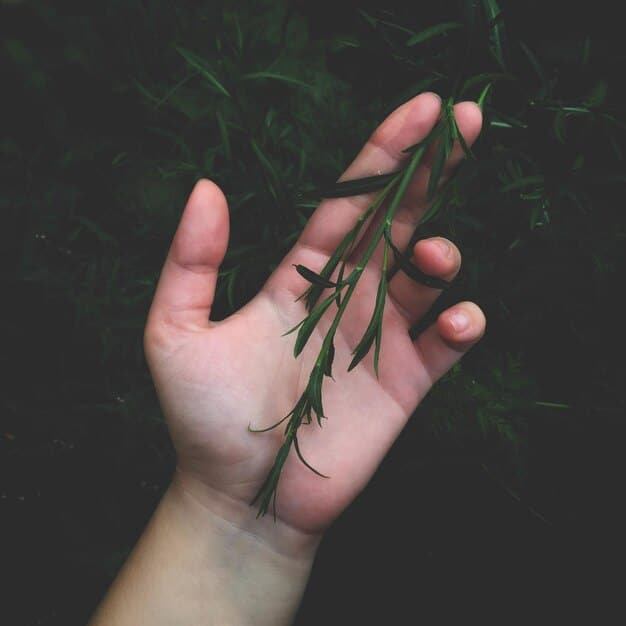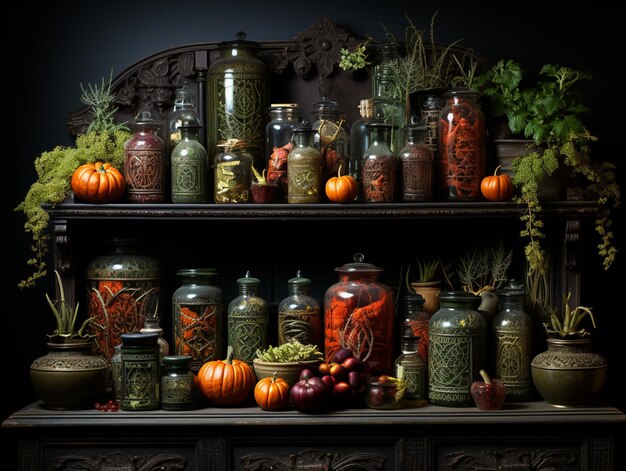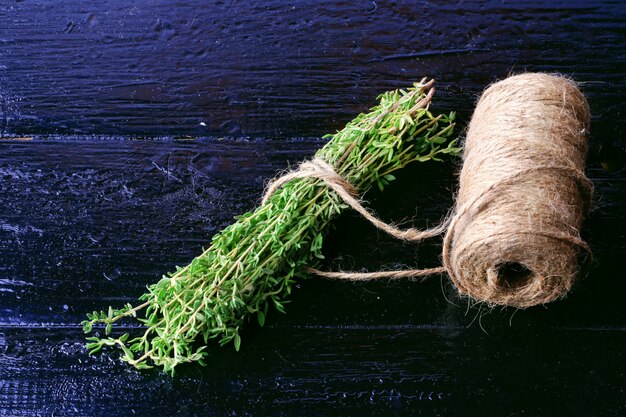The Witch’s Guide to Herbalism: 5 Essential Herbs for Healing and Spellwork

The Witch’s Guide to Herbalism: 5 Essential Herbs for Healing and Spellwork explores the potent connection between witchcraft and herbalism, highlighting five essential herbs for healing rituals and spellwork, enhancing both physical and spiritual well-being.
Embark on a mystical journey into the realm of herbalism with our comprehensive guide. Discover how the ancient craft of witchcraft intertwines with the potent healing and magical properties of herbs. Are you ready to enhance your spellwork and healing practices?
Welcome to The Witch’s Guide to Herbalism: 5 Essential Herbs for Healing and Spellwork, an exploration into the heart of natural magic. Herbalism, the practice of using plants for healing and spellcrafting, is deeply rooted in witchcraft. This guide illuminates five essential herbs every witch should know, empowering you to harness their energies for profound healing and potent spellwork.
The Intertwined Paths of Witchcraft and Herbalism
Witchcraft and herbalism have been intrinsically linked for centuries. Witches have long understood the power of plants, not just for their physical healing properties but also for their magical energies. Understanding this connection can greatly enhance your practice.

Why Herbalism is Crucial for Witches
Herbalism offers witches a tangible way to connect with the natural world. By understanding the properties of different plants, witches can amplify their spells, create powerful potions, and enhance their healing abilities.
- Enhanced Spell Power: Herbs act as conduits for energy, amplifying the intention behind your spells.
- Natural Healing: Many herbs possess medicinal properties, promoting holistic well-being.
- Deepened Connection: Working with herbs fosters a stronger connection with nature and the earth’s energies.
For a witch, knowledge of herbalism is more than just a skill; it’s a pathway to deeper understanding and empowerment.
Lavender: The Herb of Peace and Purification
Lavender, known for its calming scent and beautiful purple flowers, is a versatile herb with a multitude of magical and healing properties. It is a staple in any witch’s garden or apothecary and is an essential ingredient in The Witch’s Guide to Herbalism: 5 Essential Herbs for Healing and Spellwork.
Magical Properties of Lavender
Lavender is primarily associated with peace, purification, and relaxation. It can be used in a variety of spells and rituals to promote tranquility, cleanse energies, and enhance psychic abilities.
- Sleep and Relaxation: Place lavender sachets under your pillow to promote restful sleep and ease anxiety.
- Purification Rituals: Burn dried lavender to cleanse spaces and objects of negative energy.
- Love Spells: Incorporate lavender into love spells to attract gentle and harmonious relationships.
Lavender’s gentle yet powerful energy makes it an invaluable tool for any witch seeking serenity and clarity.
Rosemary: The Herb of Remembrance and Protection
Rosemary, a fragrant and woody herb, holds a special place in witchcraft for its protective and memory-enhancing properties. Its potent aroma and robust nature make it a favored herb in The Witch’s Guide to Herbalism: 5 Essential Herbs for Healing and Spellwork.

How to Use Rosemary Magically
Rosemary is often used in spells for protection, memory enhancement, and cleansing. Its sharp, invigorating scent helps to clear the mind and ward off negative influences.
- Protection Charms: Carry a sprig of rosemary to protect yourself from harm and psychic attacks.
- Memory Enhancement: Inhale rosemary essential oil or drink rosemary tea to improve focus and memory.
- Cleansing Rituals: Burn rosemary to cleanse spaces, objects, and yourself of negative energy.
- Healing Spells: Use rosemary in healing spells to promote physical and emotional well-being.
Rosemary’s robust energy and versatile applications make it a powerful ally in the witch’s arsenal. Witches understand the importance of working with the correct herbs which is why The Witch’s Guide to Herbalism: 5 Essential Herbs for Healing and Spellwork is a necessary tool.
Chamomile: The Herb of Calm and Prosperity
Chamomile, with its delicate, daisy-like flowers, is celebrated for its calming and soothing properties. As part of The Witch’s Guide to Herbalism: 5 Essential Herbs for Healing and Spellwork, chamomile is used to promote relaxation, attract abundance, and enhance psychic abilities.
Chamomile in Spellwork
Chamomile’s gentle energy makes it ideal for spells focused on relaxation, prosperity, and emotional healing. Incorporating chamomile into your practice can bring a sense of peace and abundance.
Here are a few ways to include chamomile in spells:
- Meditation: Use chamomile tea for a meditation to promote a calm mind.
- Prosperity Spells: Carry a chamomile flower when seeking new opportunities or financial gains.
- Sleep and Dreams: Drink chamomile tea before bed to promote relaxation and restful sleep.
Chamomile’s gentle nature and versatile uses make it a beloved herb among witches seeking tranquility and abundance.
Mint: The Herb of Communication and Healing
Mint, with its refreshing and vibrant leaves, is known for its ability to enhance communication, stimulate the mind, and promote healing. Its invigorating scent and versatile properties make it a valuable addition to any witch’s collection, and crucial to learn about in The Witch’s Guide to Herbalism: 5 Essential Herbs for Healing and Spellwork.
Using Mint in Your Practice
Mint is used in spells and rituals to improve communication, attract prosperity, and enhance healing energies.
Here are some ways to use mint magically:
- Communication: Burn mint as incense to facilitate clear and effective communication.
- Prosperity Spells: Place mint leaves in your wallet or purse to attract abundance.
- Healing Spells: Use mint in healing rituals to promote physical and emotional well-being and health.
With its energizing and versatile powers, mint is a fantastic herb for witches looking to manifest clarity and wellness.
Sage: The Herb of Wisdom and Cleansing
Sage, a fragrant and potent herb, is revered for its wisdom-enhancing and cleansing properties. It’s a staple when creating a sacred space, and its benefits are mentioned in The Witch’s Guide to Herbalism: 5 Essential Herbs for Healing and Spellwork.
How to Use Sage in Witchcraft
Sage is primarily used for cleansing spaces and objects, enhancing wisdom, and providing protection. Its strong, earthy scent helps to banish negative energies and promote clarity.
Here are a few examples:
- Smudging: Burn sage to cleanse spaces of negative energy and attract positive influences.
- Wisdom Enhancement: Drink sage tea to improve memory, concentration, and enhance inner wisdom.
- Protection Spells: Hang dried sage above doorways to protect your home from negative energy.
Sage’s potent cleansing abilities and wisdom-enhancing qualities make it an essential herb for any witch.
| Key Point | Brief Description |
|---|---|
| 🌿 Lavender | Promotes peace and is used in purification rituals. |
| 🌱 Rosemary | Enhances memory and offers protection. |
| 🌼 Chamomile | Calming herb attracting abundance. |
| 🍃 Mint | Improves communication and healing. |
Frequently Asked Questions
Herbalism is integral to witchcraft, enhancing spell power and deepening connections with nature. The Witch’s Guide to Herbalism: 5 Essential Herbs for Healing and Spellwork highlights this symbiotic relationship.
Lavender can be used in spells for sleep, purification, and love. Place lavender sachets under your pillow for restful sleep or it can be burned to cleanse spaces of negative energy.
Yes, rosemary is known for its protective properties. Carrying a sprig of rosemary can shield against harm and psychic assaults. It plays a positive role for a Witch overall.
Chamomile’s gentle energy makes it ideal for spells focused on relaxation, prosperity, and emotional healing. Enjoy it in tea for improved relaxation and healing.
Sage is powerful for cleansing spaces and bringing wisdom. It’s a staple for witches who seek to banish negativity and create clarity, allowing them to perform their craft with improved accuracy.
Conclusion
The Witch’s Guide to Herbalism: 5 Essential Herbs for Healing and Spellwork provides a foundation for understanding the powerful connection between witchcraft and herbalism. By incorporating these five essential herbs into your practice, you can unlock their potent energies for healing, spellwork, and spiritual growth.





